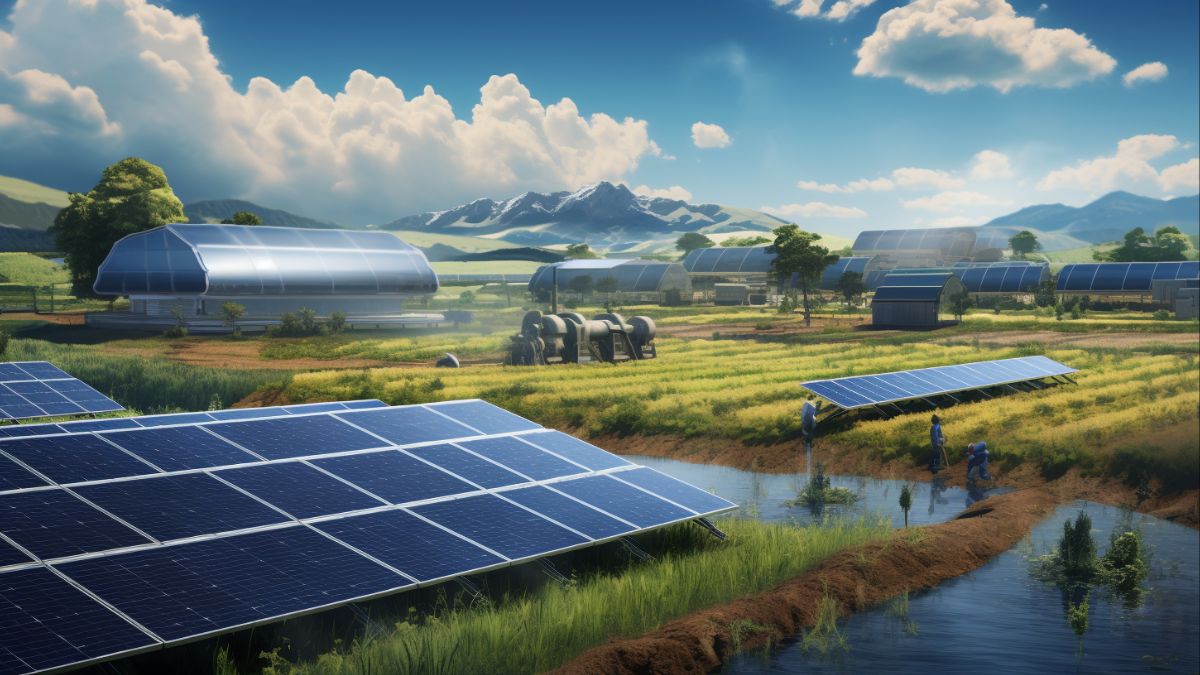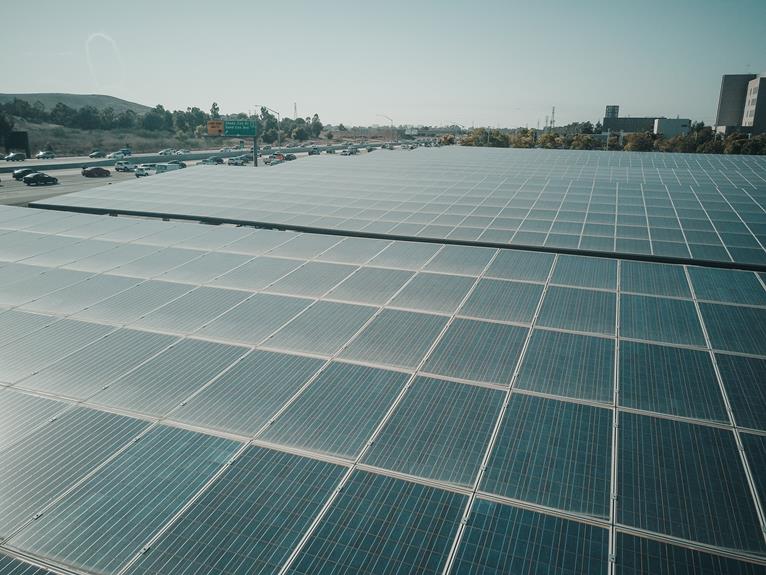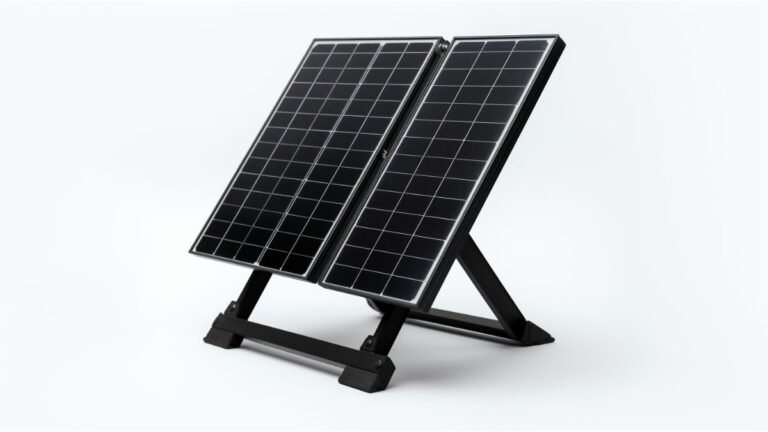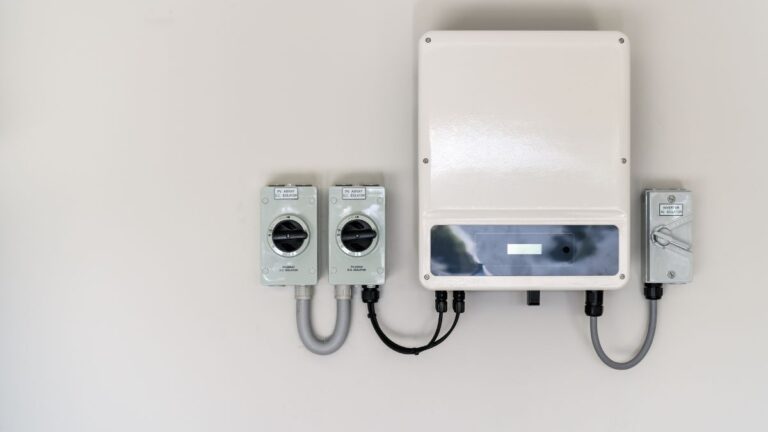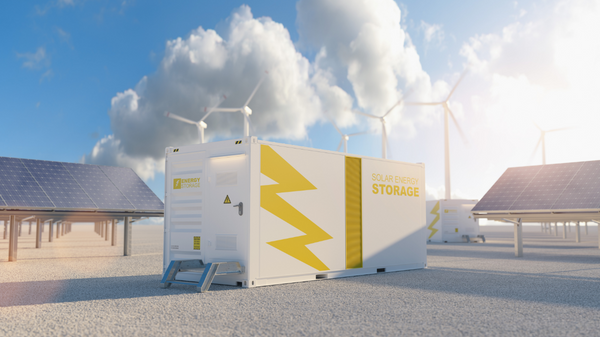Getting to Know 7 Solar-Powered Farming Tools for Success
As farmers, we have witnessed a revolution in today’s farming world. There are now solar-powered farming tools and equipment available. The energy from the sun has transformed our farms into self-sufficient, eco-friendly havens.
Solar panels power electric fences, irrigation systems, and even ventilation in greenhouses. They save us time, money, and resources, reducing our reliance on traditional electricity sources.
With solar power, we’re taking a giant leap towards a more sustainable future for agriculture. Join us as we explore the incredible ways in which solar power has revolutionized farming.
1. Solar-powered Livestock Containment
Solar-powered livestock containment provides a reliable and sustainable solution for powering electric fences on farms. By harnessing the power of the sun, farmers can eliminate the need for traditional electrical power sources and reduce their reliance on gas or electricity for livestock containment.
Solar panels can also be used to power well pumps, ensuring remote watering of livestock without the need for costly fuel or electricity. Existing electric fences and well pumps can be easily retrofitted with solar chargers, making it a cost-effective solution for farmers.
Not only does solar-powered livestock containment provide reliable electricity for livestock containment, but it also helps reduce carbon emissions and lower energy costs. With solar-powered electric fences and well pumps, farmers can contain their livestock and water them sustainably, all while enjoying the benefits of the sun’s energy.
2. Solar-powered Water Pumps and Irrigation
Continuing our exploration of solar-powered farming tools and equipment, let’s now delve into the efficiency and sustainability of water pumps and irrigation systems powered by solar energy.
Solar-powered irrigation systems offer remote watering solutions that are both environmentally friendly and cost-effective. By harnessing the power of the sun, these systems eliminate the need for traditional power sources like gas or electricity, reducing reliance on non-renewable resources.
Solar panels can power well pumps, allowing for the remote watering of livestock and the filling of storage tanks using natural energy. The original equipment can still be used with solar panels, making it a convenient and seamless transition.
With solar-powered irrigation, farmers can efficiently water their crops while minimizing their carbon footprint. It’s a bright solution for a greener future in farming.
3. Solar-powered Air Heating
How can solar energy be harnessed to provide heating for farm buildings and animal enclosures? This is where the next technology of solar-powered farming tools comes into play: solar-powered air heating!
Solar heating offers a reliable and cost-effective solution for keeping our furry friends warm and cozy. With DIY solar heating projects, farmers can easily add solar panels to their existing setups and reap the benefits.
Not only does solar heating save money, but it also reduces reliance on traditional heating methods. Imagine, no more worrying about rising energy costs or running out of fuel for heaters. Plus, solar heating provides similar savings and benefits to what homeowners experience with solar energy.
4. Solar-powered Dehydrators
Solar dehydrators are a popular and effective tool for drying seeds and preserving fruits on the farm. DIY solar dehydrators offer an alternative to traditional drying methods while harnessing the power of the sun. By converting existing dehydrators into solar-powered ones, farmers can save money and reduce their reliance on electricity.
The benefits of solar drying are plentiful. Firstly, it’s a sustainable and eco-friendly approach that utilizes natural energy. Secondly, it allows for efficient and uniform drying, ensuring high-quality output. Additionally, solar drying preserves the nutritional value and flavor of the produce.
5. Solar-powered Ventilation
To automate ventilation on farms, solar panels can power ventilators that reduce manual tasks and ensure proper air intake and exhaust. Solar-powered ventilation systems offer numerous benefits for farmers, combining the power of the sun with the need for optimal air circulation.
Here are three reasons why solar-powered ventilation is a game-changer:
- Energy Efficiency: Solar panels harness the sun’s energy, providing a sustainable and cost-effective power source for ventilators. This eliminates the need for electricity or fuel, saving farmers money and reducing their carbon footprint.
- Automation: With solar-powered ventilators, farmers can automate the ventilation process, freeing up their time for other important tasks. The system can be programmed to adjust air intake and exhaust based on specific requirements, ensuring optimal conditions for crops or livestock.
- Reliability: Solar-powered systems are independent of the grid, making them more reliable during power outages or in remote locations. Farmers can rest assured that their ventilation system will continue to operate even when traditional power sources fail.
Solar-powered ventilation isn’t only practical, but it also brings a breath of fresh air to farming operations.
6. Solar-powered Sensors
We can further enhance the efficiency and effectiveness of solar-powered ventilation systems on farms by integrating solar-powered sensors.
Solar-powered sensors offer numerous advantages for precision agriculture. By harnessing the power of the sun, these sensors can collect vital information such as soil quality, weather changes, and animal food and water consumption. This data can then be analyzed and used to make adjustments that improve farm efficiency.
Additionally, the integration of solar-powered sensors with IoT (Internet of Things) technology allows for real-time monitoring and control of farm conditions. Farmers can remotely access and manage the data collected by these sensors, ensuring optimal farm management.
With solar-powered sensors, farming becomes not only more efficient but also more sustainable and environmentally friendly.
7. Solar-powered Lighting
As we delve into the realm of solar-powered lighting, it becomes evident that integrating this technology with existing solar-powered sensors on farms can further enhance efficiency and sustainability. Here are three benefits of solar-powered lighting in agriculture and how it can be integrated into greenhouse farming:
- Energy Efficiency: Solar-powered lighting reduces reliance on electricity, leading to lower energy bills while meeting lighting requirements. By harnessing the power of the sun, farmers can illuminate their gardens, exteriors, and homes in a sustainable and cost-effective way.
- Environmental Sustainability: By reducing the use of traditional electrical power sources, solar-powered lighting contributes to a greener farming ecosystem. It helps farmers minimize their carbon footprint and protect the environment for future generations.
- Integration in Greenhouse Farming: Solar-powered lighting can be seamlessly integrated into greenhouse farming to provide optimal lighting conditions for plants. This integration allows for better control of light exposure, resulting in improved crop growth and yield.
Conclusion
Solar power has truly revolutionized farming tools and equipment, providing us with a sustainable and efficient solution. Like the sun that nourishes our crops, solar energy has become the lifeblood of our agricultural practices.
With its vast applications, from powering livestock containment to automating ventilation in greenhouses, solar power has allowed us to transform our farms into self-sufficient and eco-friendly havens.
Embracing the technology of these solar-powered farming tools is like planting a seed of sustainability, assuring a bountiful harvest for generations to come.
